Five Fits With: Niyi Okuboyejo, Designer of Post-Imperial
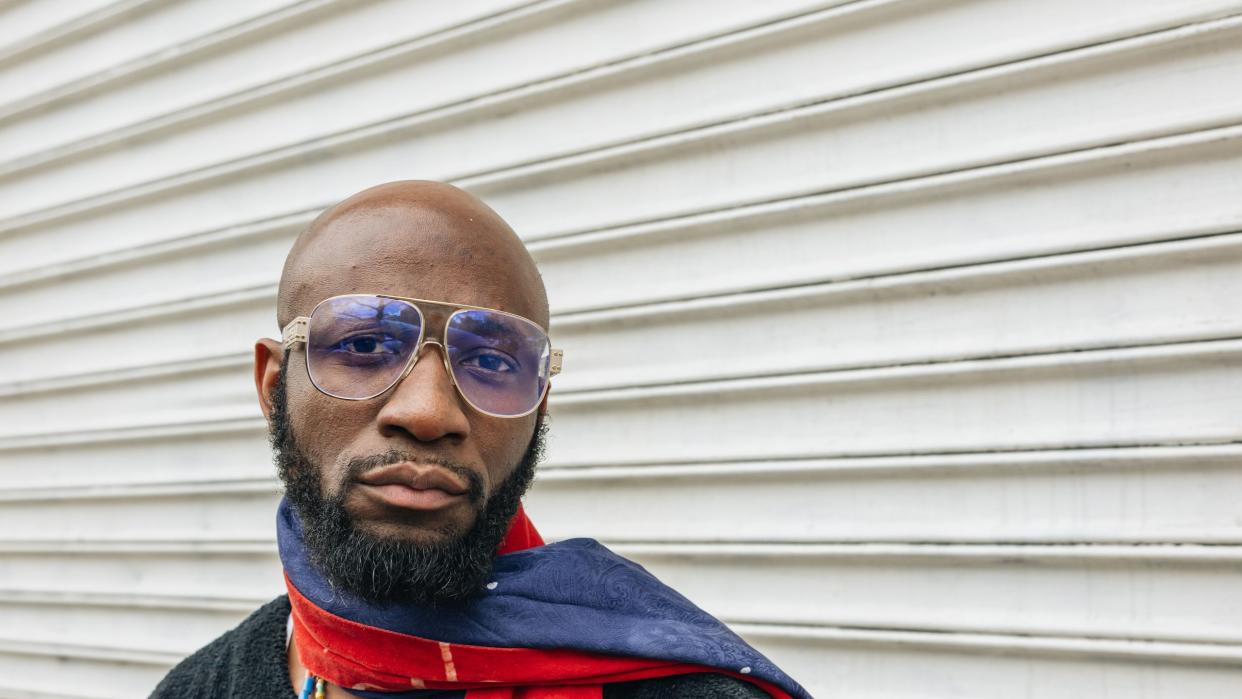
"When I hit my forties, I started my own brand. I realized that as a creative, you only have so many ideas and they expire,” Lagos-born men’s designer Niyi Okuboyejo says of his label Post-Imperial. Cutting his teeth at Oscar De La Renta after studying women’s wear at Parsons, he claims the allure of the #menswear era crept in. “I was sending my portfolio to people, and they’d say, ‘Yeah, it's good, but dude, you dress really well. Have you considered doing men's?’” After freelancing for a while, Okuboyejo realized he was giving his best work to people who might not necessarily care. “[Dating back to] Parsons, one of the things that I was exploring was how to create within fashion from a perspective that channels the Black experience and the African diaspora.”
Niyi introduced his brand with accessories, but wanted to find an authentic way to stand out. “We started working with a few dye artisans in Nigeria using a process called Adire, which is a traditional dyeing process that is one of many developed by the Yorubas in the southwest region of Nigeria centuries ago. It's for ceremonial purposes and motifs have symbolic meaning. So, if you were to understand the motif, you can actually tell a story with the fabric and the symbols.” With a unique point of view and increased sales at markets, Okuboyejo was able to expand into full collections.
Below, Niyi and I discuss the tenets of Post-Imperial, his love for Yves Saint Laurent, how wearing color and print might unlock your repressed personality, and plenty more.
Look One
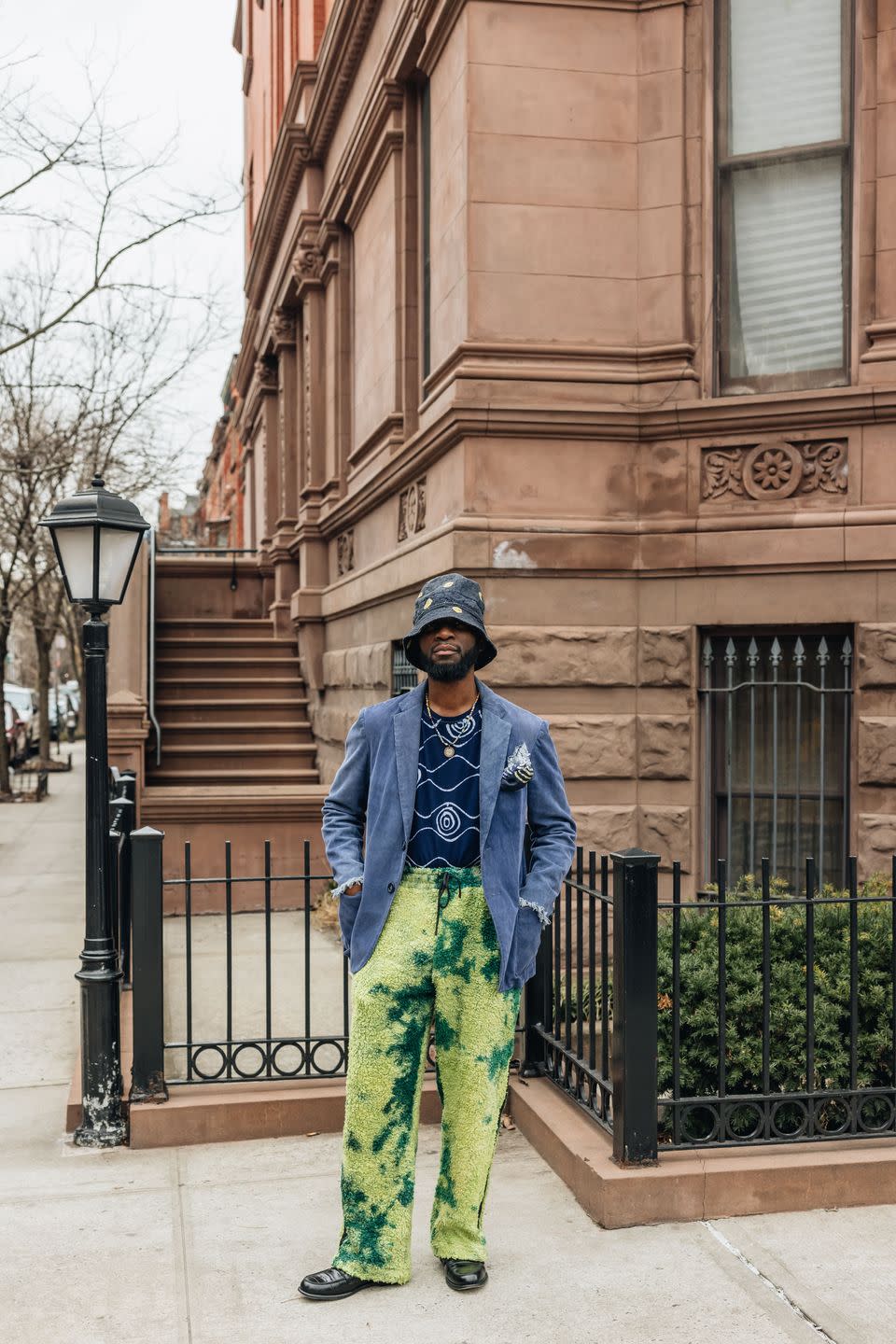


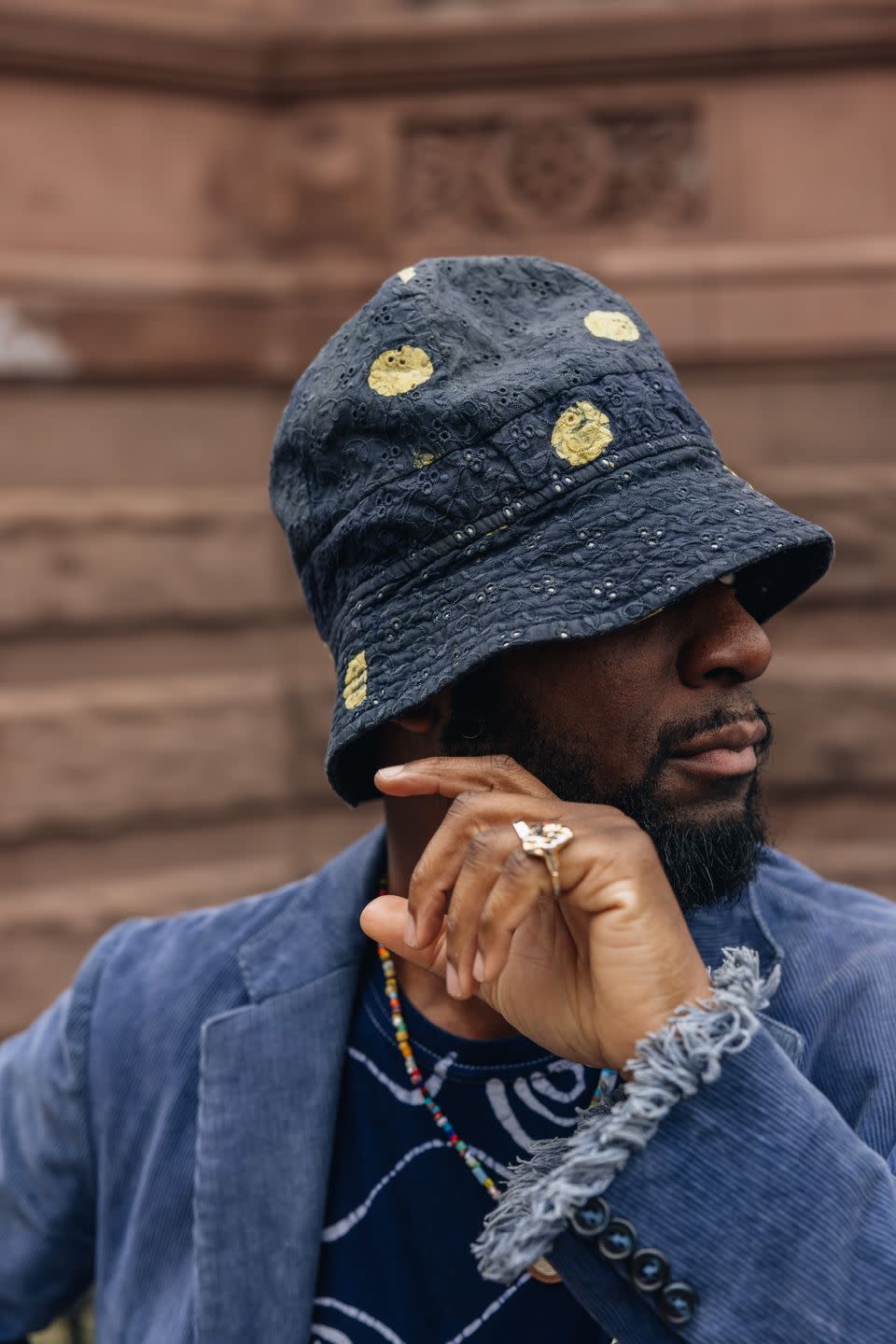
Describe Post-Imperial to anyone who might not be familiar with it. What do you seek to achieve with the brand?
At this point, I've developed how I want to work and how I approach things, centering a theme of looking at things from the African diaspora and the Black experience and translating it in a way for the global village to understand and engage with it. It's always interesting and beautiful to see how different cultures engage with it. For example, the Japanese can see it from its craft and the U.S. can see it from a social aspect. I always go back to collaboration with three things. The first one is collaboration with people. I call this storytelling mythology or myth-making, where Post-Imperial is a platform, and anyone who adds to it is a storyteller. If you wear our clothes or ship or make our clothing, you're part of the storytelling. The second one is collaborating with materials and humanizing those materials—figuring out how to give them their highest value. The third one is connecting to diaspora, which is collaborating with culture. An example is the dyeing process that we're using when we work the dye or designs and making sure that we're honoring the craft and the methods.
Post-Imperial came from the idea of creating for the now and not necessarily for looking at the past or sensationalizing nostalgia, not looking at the institutions that have built things politically, socially, from a fashion perspective as well. How do we create something that's much more thoughtful in clothes that we wear, and how can we tell stories through clothing? Clothing is just one step. There are other things that I see us doing later on. This first step is us making creative clothes for creative people. We’re big proponents of making beautiful things that are thoughtful.
Look Two
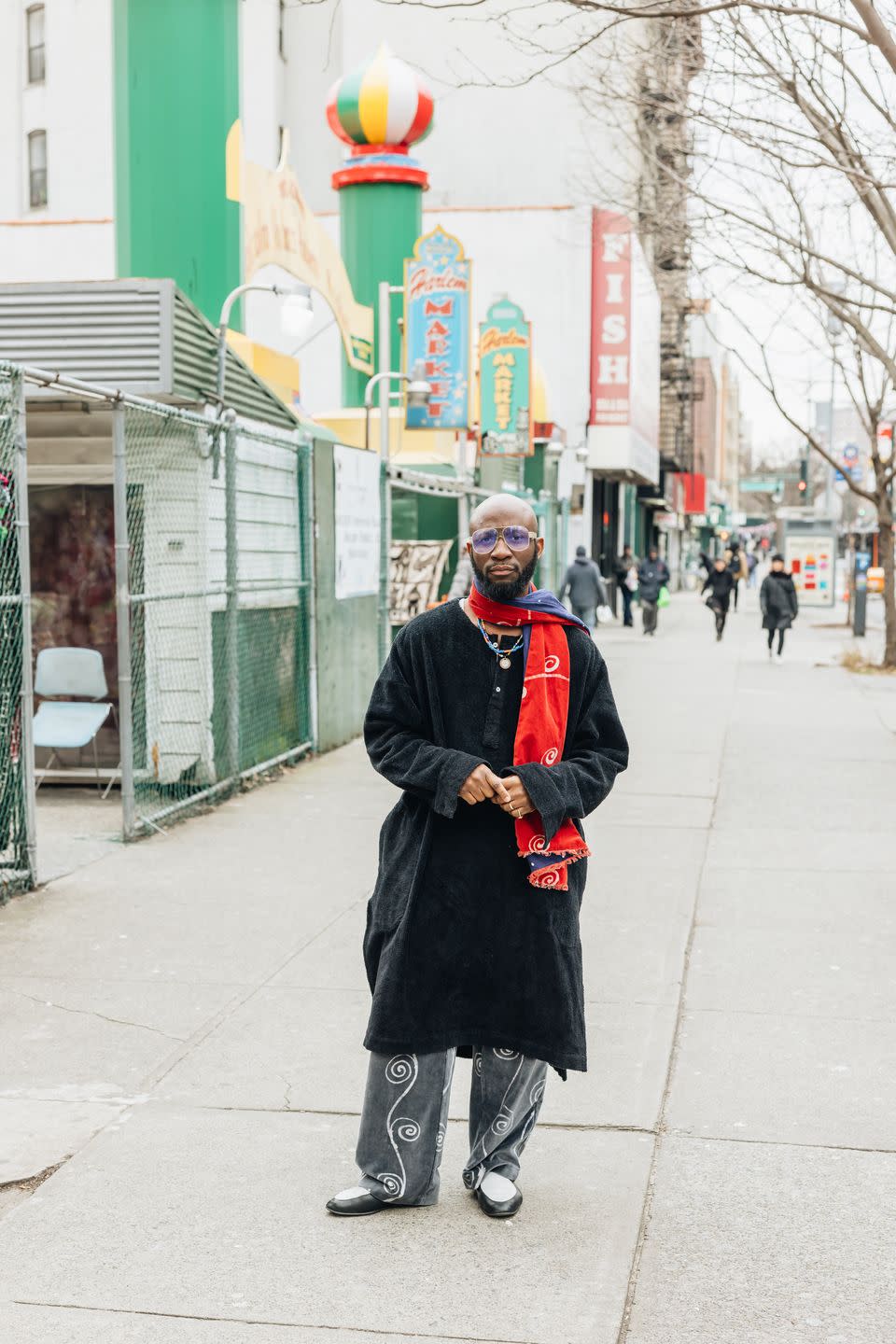
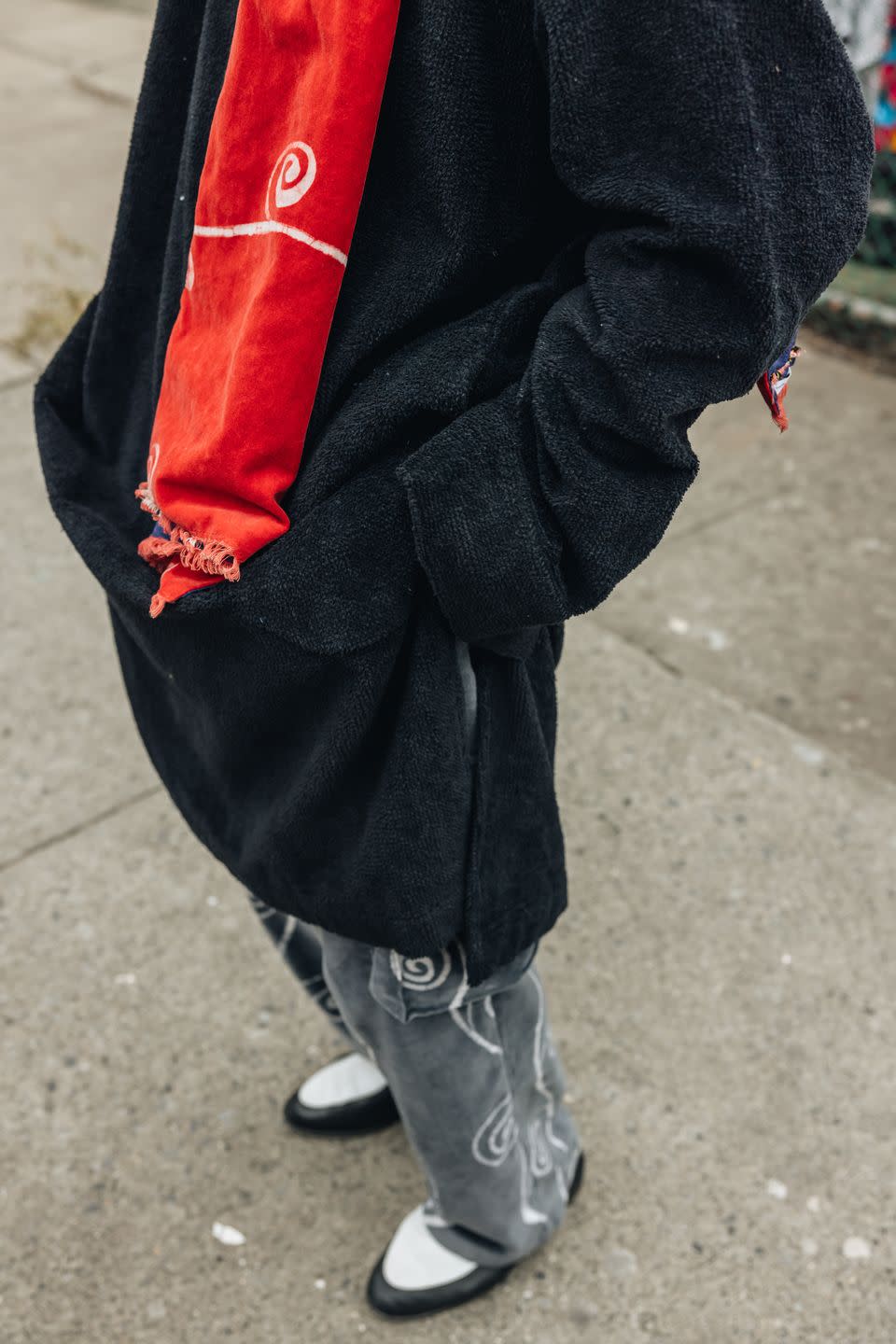
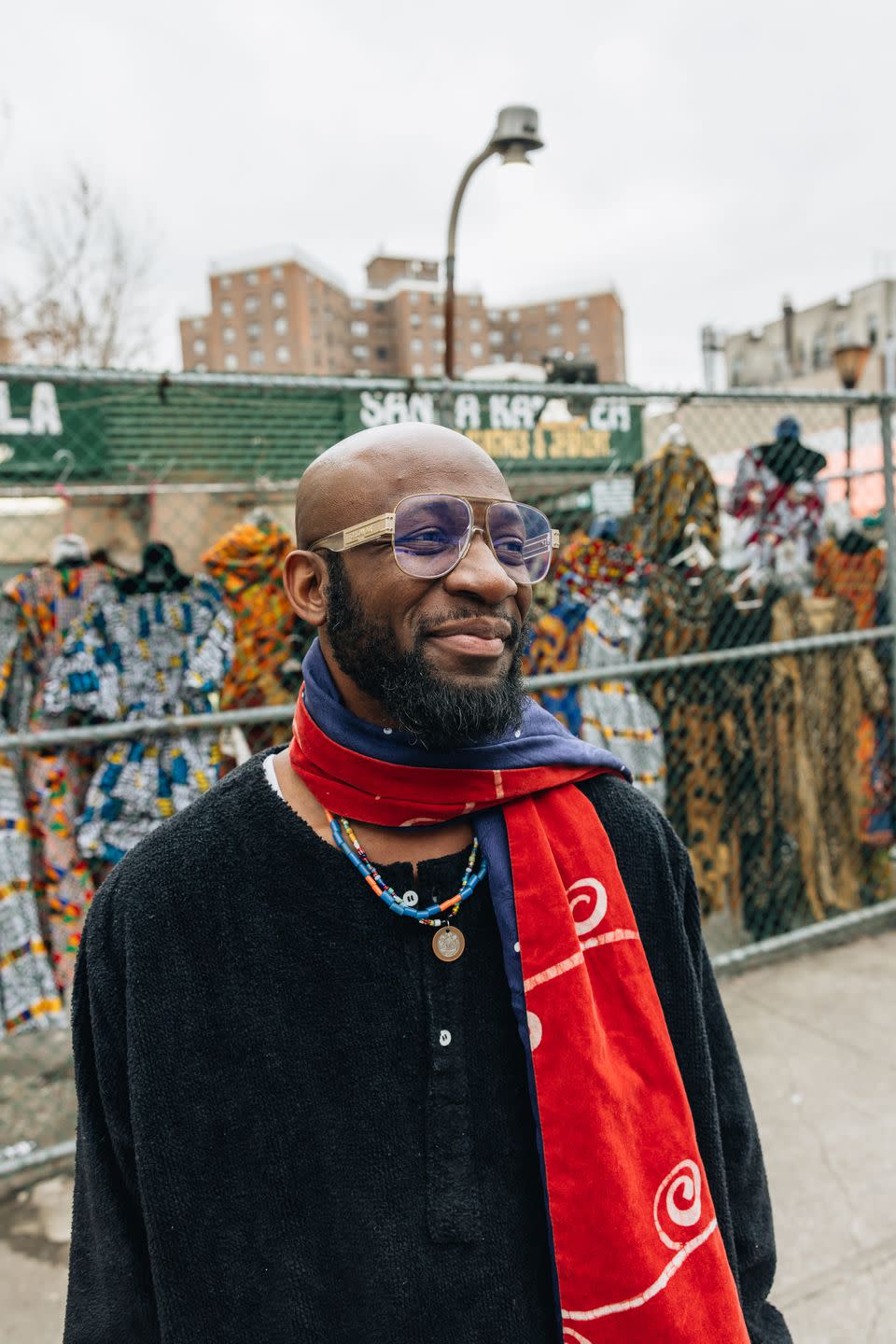

Can you remember when you first became interested in clothing and style?
I've always been interested in clothing. I think it's from my dad and mom. They were always well-dressed. If you're Nigerian, you're interested in clothing. That's just a default. There's something about us wanting to adorn ourselves in beautiful and colorful clothes. I got interested in fashion in senior year of high school. We had a project where we were supposed to write a paper on someone famous. In the library, I stumbled upon a picture of Yves Saint Laurent’s smoking jacket by Helmut Newton. It was something I'd never seen before. I didn't know if it was a man or woman. It was a very androgynous look and so it got me curious. I took a deep dive into Yves Saint Laurent and I wrote the paper on him. He was the first designer that I grew obsessed with. I appreciated that he worked different philosophies and art into his work. So, then I started learning about those different things. That's how I also got into art. He was also one of the first major fashion designers to feature Black models in his collections.
Look Three
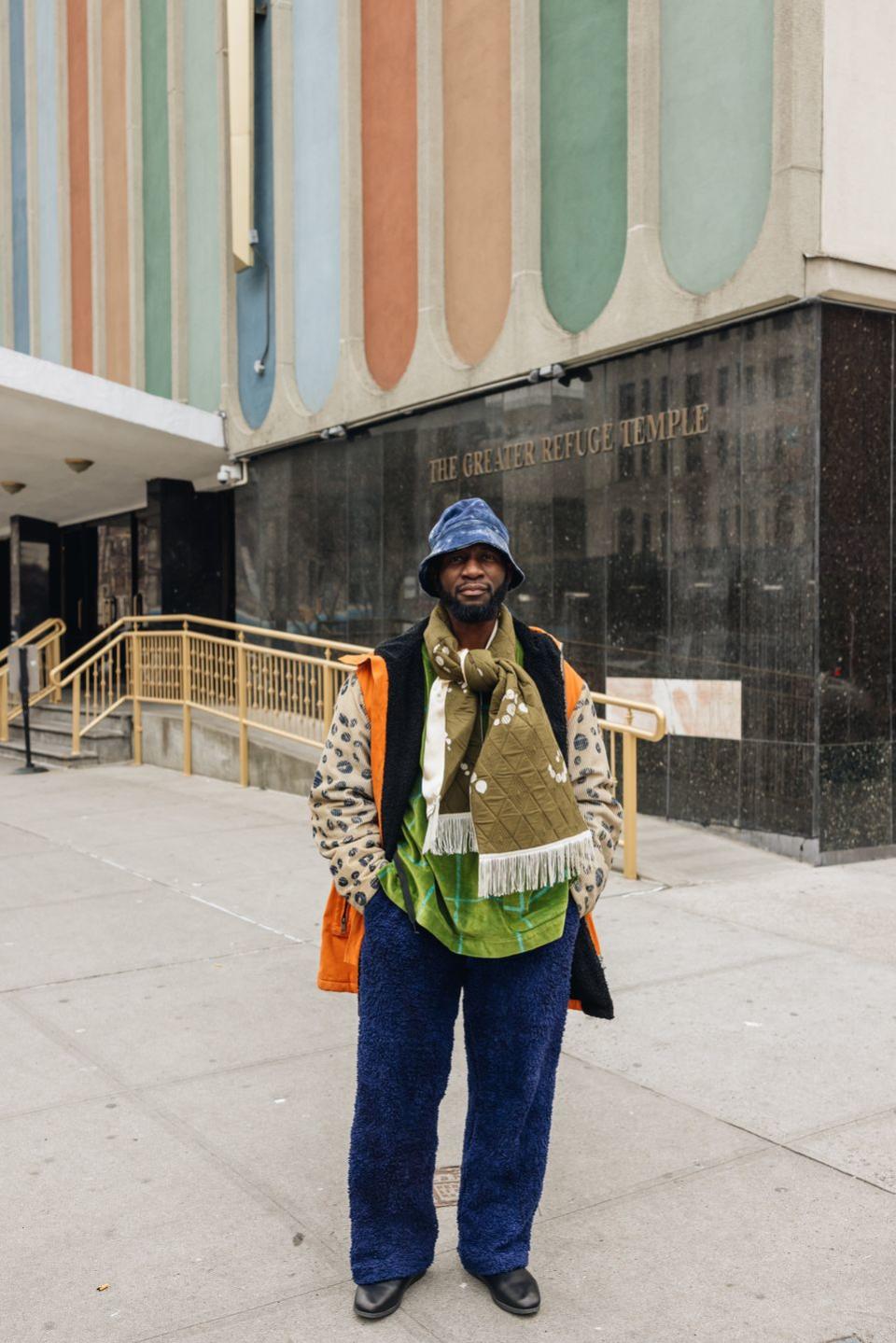

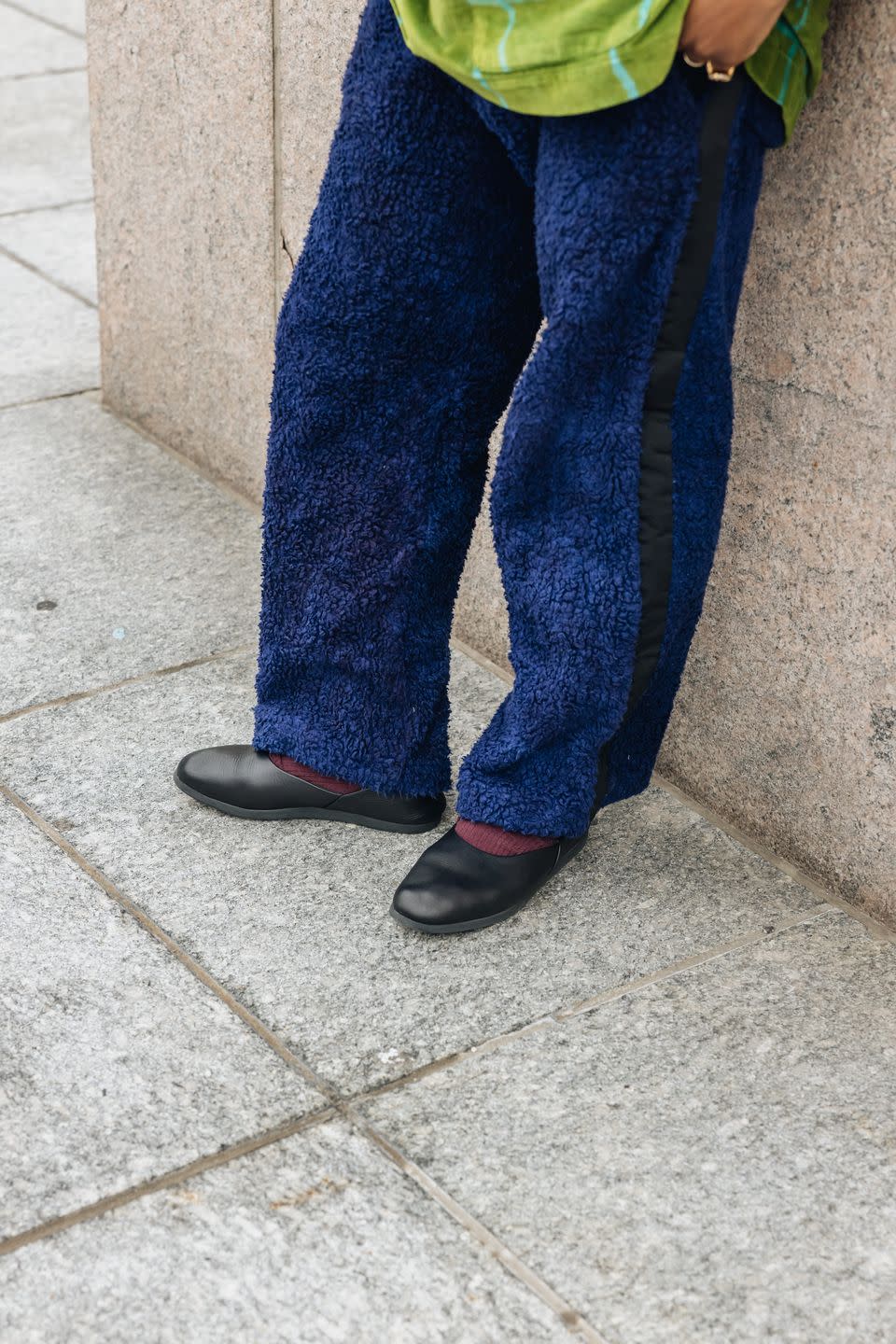
You started to touch on it, but where are your clothes made and what sort of techniques are employed that are different from traditional fashion brands?
Our clothes are sourced, dyed, and manufactured in Lagos. We've always dyed everything in Nigeria, but now it's all a hundred percent made in Nigeria. It’s a milestone that I'm proud of. The Adire part of the dyeing is very important because it ties us to the land in terms of the culture. It's one of the reasons why I'm so socially invested in making sure that we continue to keep that dyeing process and technique going, because it adds the spirit to all the people that have built from our culture into our clothes. When I got into men's, my background was in tailoring. The sports jacket has always been the foundation of how I style myself, but I like to be comfortable as well. Every time we make something new, I'm like, “I want to make sure that you can sleep in them.” If I'm making a suit, I want the suit to feel like pajamas. Again, “Creative clothes for creative people.” We want to make sure that we're making clothes that can tell stories. Even if you're not aware of that, there's a spirit of people that have helped to uplift [the garments].
Look Four




What would you say to a fashion fan who might be intimidated by some of the prints or fabrics you use in your collections?
Those things are subjective. If you break down a lot of the prints, they are very familiar prints, like bengal stripes and pinstripes. But the stripes are not straight because they're doing it by hand, so everything's going to be crooked. From the context of it looking hand-dyed, it gives a wabi-sabi feel. It might feel intimidating. I don't have any issue with people not wearing color. But I think there's nothing wrong with just trying color here and there. You don't have to go full out, right? You can add that one thing where everything else is subtle, and then you just have that pop of color in there. You can bring in that one thing that can help to elevate your wardrobe. I would always encourage someone to have that one orange shirt or that one green tie, or that one orange bucket hat that would make things a little interesting for you. I look at style is on a personality level. It's the easiest way for us to show our personality or show who we are without saying too much. Sometimes, wearing that yellow shirt brightens your day; like, "I didn't know I was feeling down, but I'm wearing a shirt, and it's making me feel really good." You’ll notice that there are certain people that you see wearing the best clothes and they've completed the rubric, yet they look very uncomfortable. Whereas you have that one person that's wearing a t-shirt and jeans, and you're like, "Why does he look so cool?" Because your best accessory is your personality. Instead of saying, "I couldn't wear that,” ask, "How can I wear that? How can I match that with my personality?"
Are there any other brands that you're into?
I teach at Parsons as a professor of fashion. I teach fashion show production, so I need to know what's going on in fashion. The brands that hold a special place in my heart are Helmut Lang and Prada. Prada has always been my favorite brand. I'm so compromised. I can't give you an honest review of Prada. I'm obsessed with Loewe.
[Jonathan Anderson] is a genius.
More than. Jonathan Anderson, in my opinion, is the greatest living designer right now. I'm obsessed with their candles. I'm obsessed with their home decor. If we talk about contemporary Black brands, Lagos Space Programme is probably my current. I love Wales Bonner.
Look Five
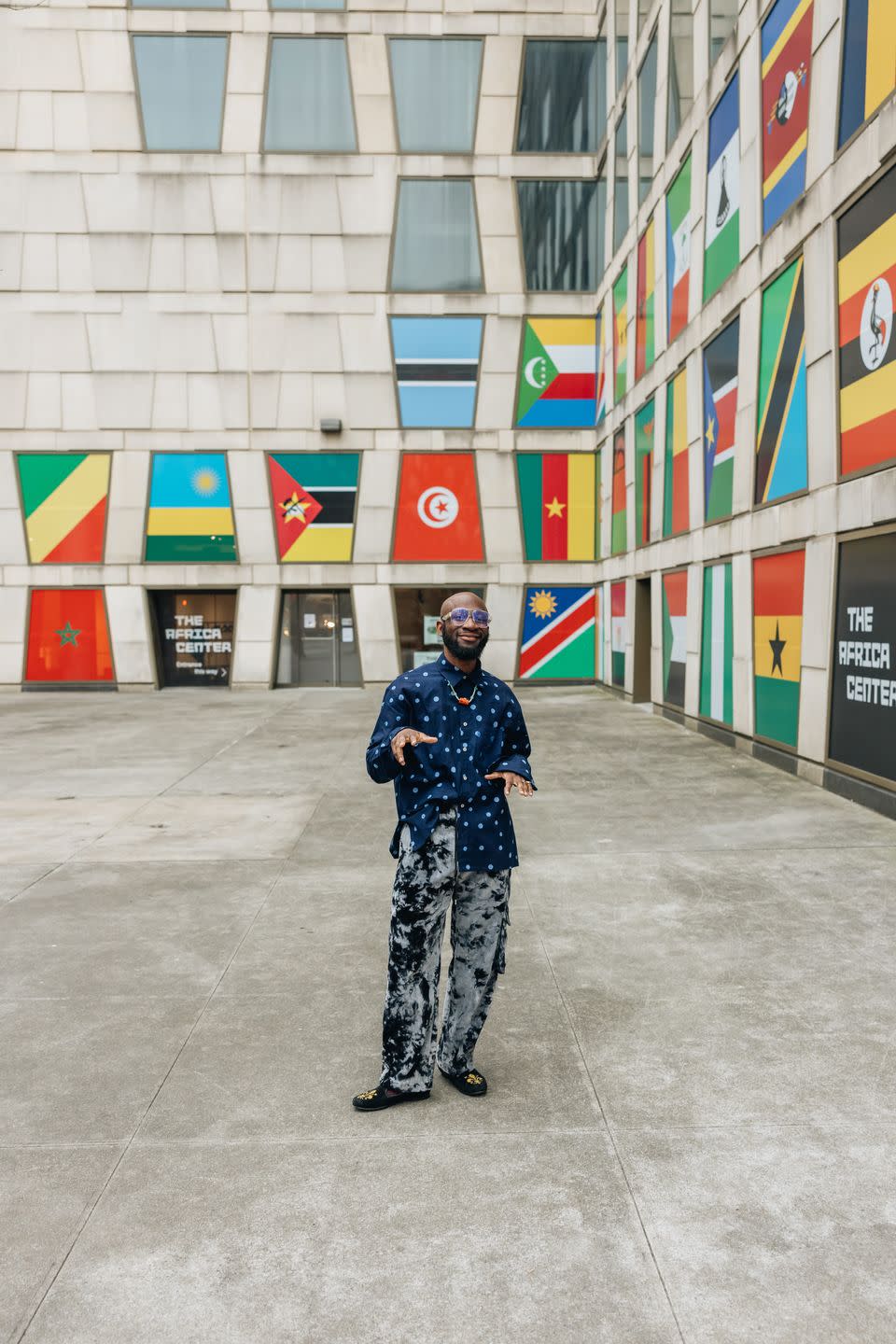
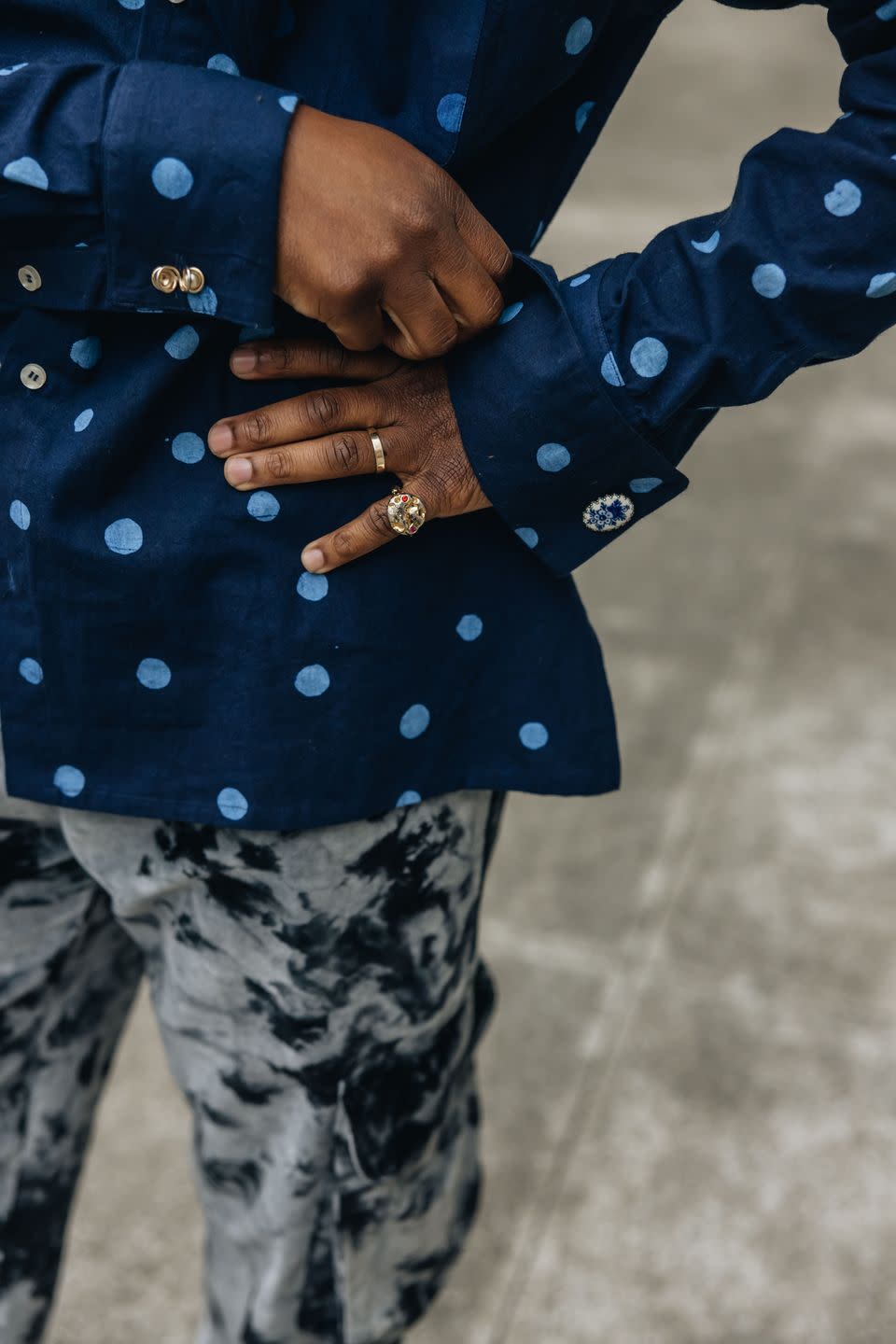
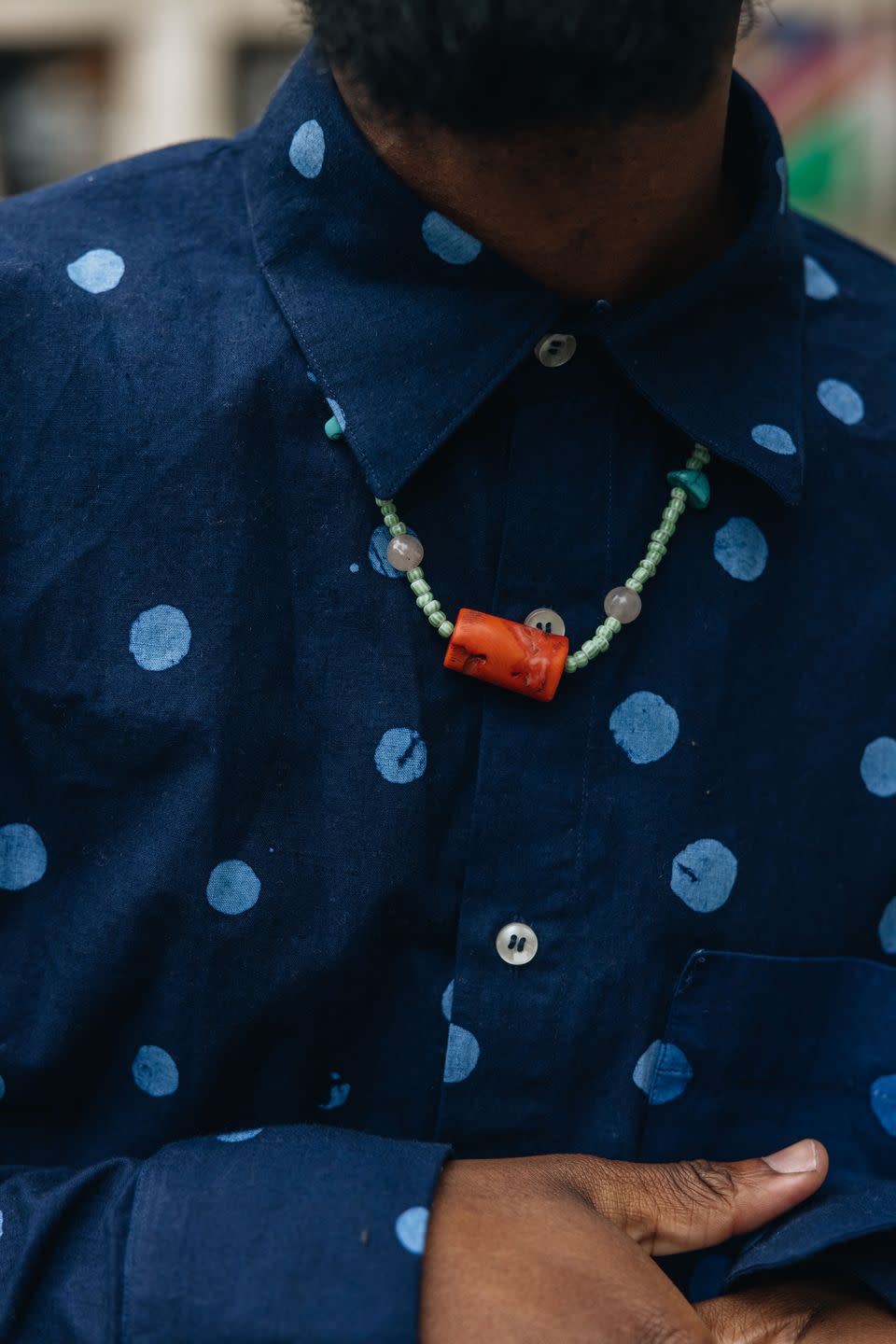
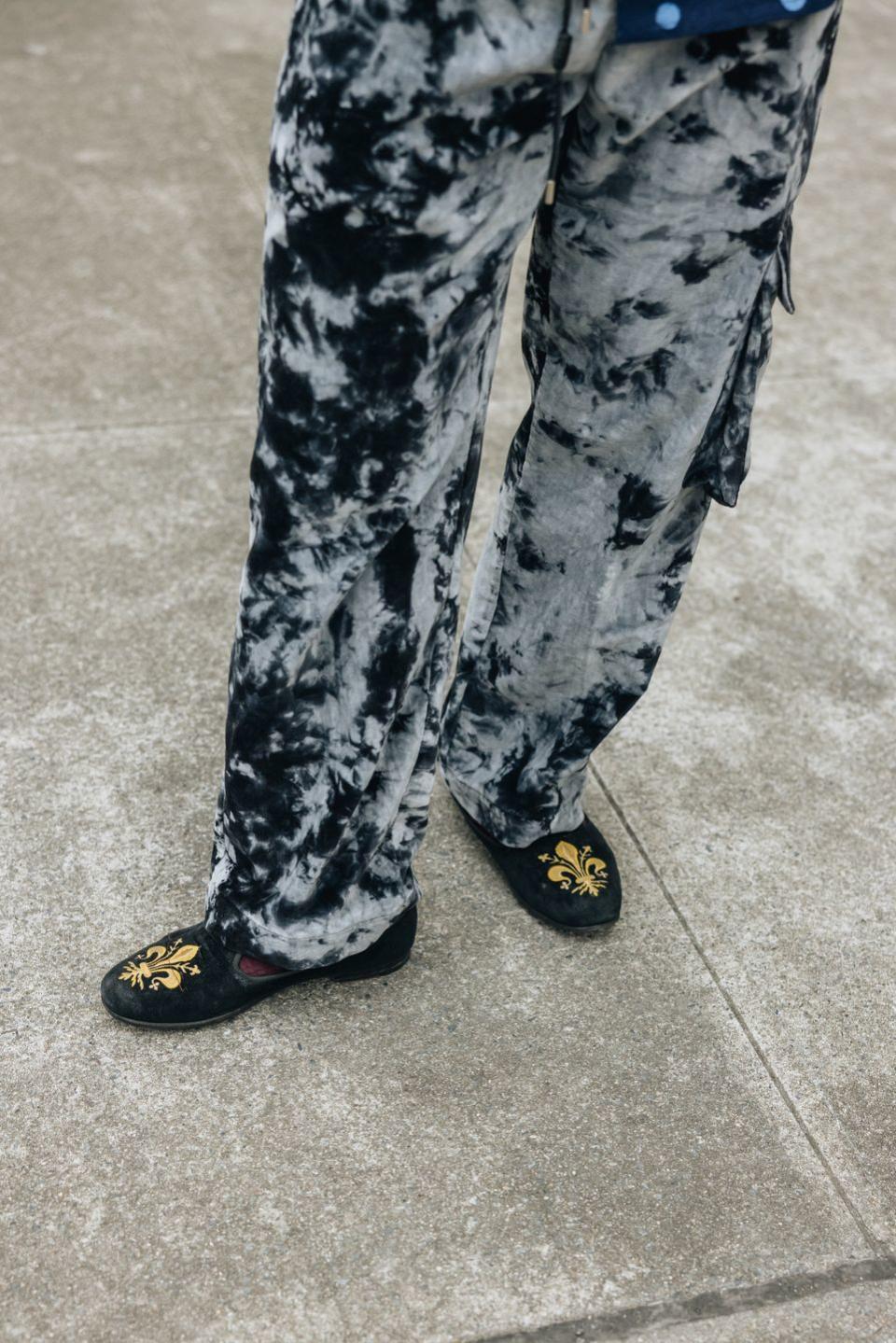
For this piece, outside of a couple of accessories, you’ve only worn Post-Imperial. Why?
I only wear my stuff. It's important for me to be able to embody what Post-Imperial is, because if I can't do it, how can I convince anyone else to? Brands are like cults. As a designer or creator, you have to embody the ideals of a cult leader. You have to be able to either put some uniform together or have an avatar that puts on that uniform so people can recognize and acknowledge that space. Whenever I create a new product or category, unless it's a piece from a friend's brand, whatever I have from before I started making that product, I give away. When I started making ties, before then I had a hundred ties. The day I received my first tie, I took all my ties and I gave them away. When I started making shirts, as soon as I got mine, I got rid of all my Hamilton shirts, all my Comme des Garçons shirts. I am a representative of the idea of what Post-Imperial is. No one can sell it better than me. No one can present it better than me. That's what they see. It would be odd for me to wear a garment from another brand, and then someone gives me a compliment like, "Oh, awesome, who made that shirt?" And then I can't plug my own brand. I'm plugging someone else's brand. That's a “no” for me. I find it strange when I see designers wear other brands instead of theirs. if you're a designer, you should own your clothes, embody it. You want other people to buy your whole thing from head to toe, but you are not even wearing it from head to toe. How do you convince someone else to do that?
If you had to wear one outfit for the rest of your life, what would it consist of?
I don't know. I only know one thing that would be in there. It would be a sports jacket with a pocket square—a Post-Imperial standard jacket. Because of where I'm at in my life, billowy pants. Once you have kids, you gain daddy weight. I don't want pants touching my thighs. I don't want anything skinny or tailored. I'd say a nice shirt that I can wear with a tie if I need to. Everything is loose. I think the jacket maybe can be a little bit fitted. Loafers are the ultimate shoes. You just slip them on.
You Might Also Like


